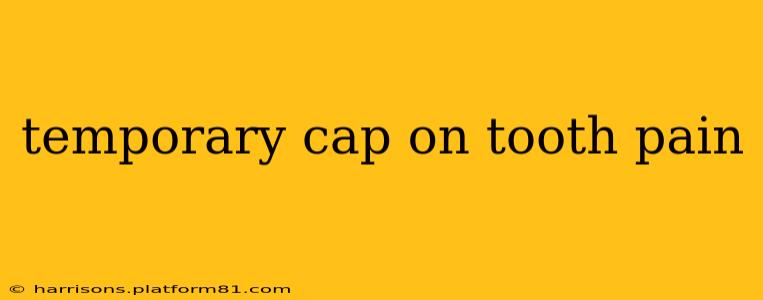A throbbing toothache can be excruciating, making even the simplest tasks feel unbearable. While a visit to the dentist is crucial for long-term solutions, there are several ways to find temporary relief from the pain until you can get an appointment. This guide explores effective methods for managing toothache pain at home, providing temporary solutions until professional dental care is available.
What Causes a Toothache?
Understanding the root cause of your toothache can help you better manage the pain and choose appropriate temporary remedies. Common causes include:
- Cavities: These are holes in the tooth's enamel caused by bacteria, leading to sensitivity and pain.
- Abscesses: A pocket of pus forms at the root of the tooth, causing severe pain and swelling.
- Cracked or Chipped Tooth: Damage to the tooth's structure exposes the sensitive inner layers, resulting in discomfort.
- Gum Disease: Inflammation and infection of the gums can cause pain and tenderness.
- Sinus Infection: Pain originating in the sinuses can sometimes be felt in the upper teeth.
- Impacted Wisdom Teeth: Wisdom teeth that are partially or fully impacted can cause pressure and pain.
Remember, this is not an exhaustive list, and self-diagnosing can be inaccurate. A dentist is the best resource for identifying the exact cause of your toothache.
Home Remedies for Temporary Toothache Relief
Several home remedies can provide temporary relief from tooth pain. However, these are not cures and should be used in conjunction with scheduling a dental appointment:
Over-the-Counter Pain Relievers:
- Ibuprofen (Advil, Motrin): A nonsteroidal anti-inflammatory drug (NSAID) that effectively reduces pain and inflammation. Follow the dosage instructions carefully.
- Acetaminophen (Tylenol): Another pain reliever that can help manage toothache discomfort. Again, follow the recommended dosage.
- Topical Anesthetics: Gels or sprays containing benzocaine or lidocaine can numb the affected area, providing temporary relief from pain. These are available over-the-counter at most pharmacies.
Rinsing with Salt Water:
Dissolving a teaspoon of salt in a glass of warm water and gently rinsing your mouth can help reduce inflammation and clean the affected area. This is particularly helpful if you suspect an infection.
Applying a Cold Compress:
A cold compress applied to the outside of your cheek near the affected tooth can help numb the area and reduce swelling. Wrap an ice pack in a thin cloth to avoid direct skin contact.
Clove Oil:
Clove oil has natural anesthetic properties. Apply a small amount directly to the affected tooth using a cotton swab. However, use with caution as it can irritate the gums if used excessively.
Hydrogen Peroxide Rinse (Use with Caution):
Dilute hydrogen peroxide (3%) with an equal amount of water and rinse gently. This can help disinfect the area, but avoid swallowing the mixture. Do not use this regularly, as it can damage your gum tissues.
How Long Can I Wait Before Seeing a Dentist?
This is a crucial question! While home remedies can provide temporary relief, delaying a visit to the dentist can worsen the underlying problem. Severe pain, swelling, fever, or difficulty opening your mouth requires immediate dental attention. Even if your pain is mild, it’s best to schedule an appointment as soon as possible to address the cause of the toothache and prevent further complications.
What if My Toothache is Severe?
Severe tooth pain may indicate a serious underlying condition like an abscess or infection. In these cases, do not delay seeking professional dental care. Contact your dentist or an emergency dental service immediately. Symptoms that warrant immediate attention include:
- Intense, throbbing pain: Unbearable pain that interferes with your daily activities.
- Swelling and redness: Significant swelling of the cheek or gum tissue.
- Fever and chills: Signs of infection.
- Difficulty opening your mouth: This could indicate a serious infection or abscess.
Can I prevent toothaches in the future?
Yes! Excellent oral hygiene is paramount. This includes:
- Brushing your teeth twice daily with fluoride toothpaste: This helps to remove plaque and bacteria.
- Flossing daily: Removes food particles and plaque from between your teeth.
- Regular dental checkups and cleanings: Professional cleaning removes tartar and allows for early detection of problems.
- Maintaining a healthy diet: Limit sugary and acidic foods and drinks.
By following these preventive measures and addressing toothaches promptly, you can significantly reduce the likelihood of experiencing future dental pain. Remember, consistent oral hygiene and regular dental check-ups are key to maintaining a healthy and pain-free smile.
